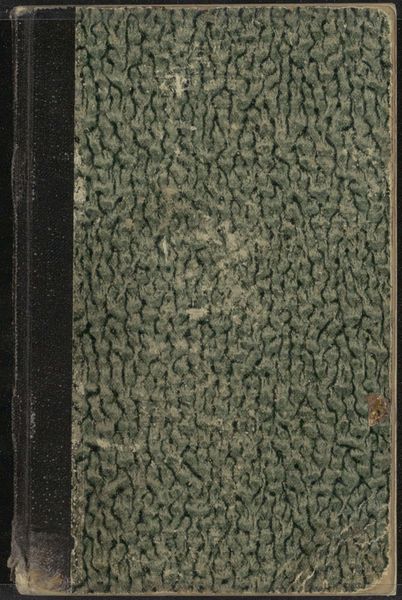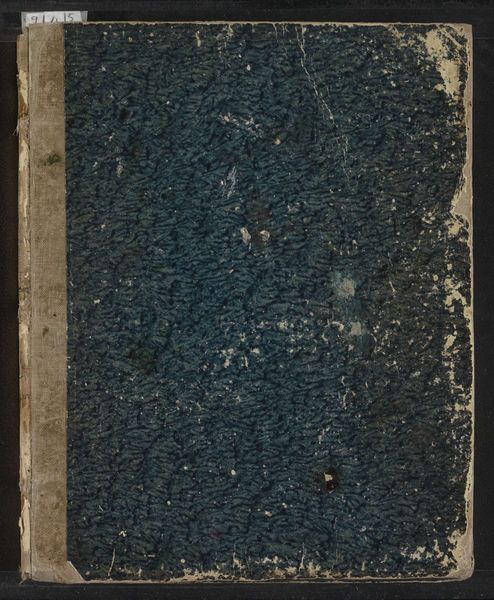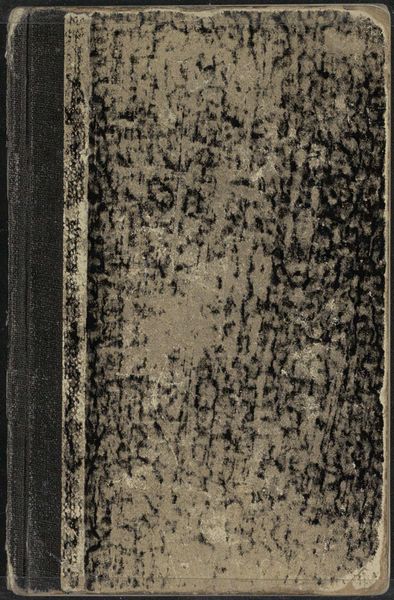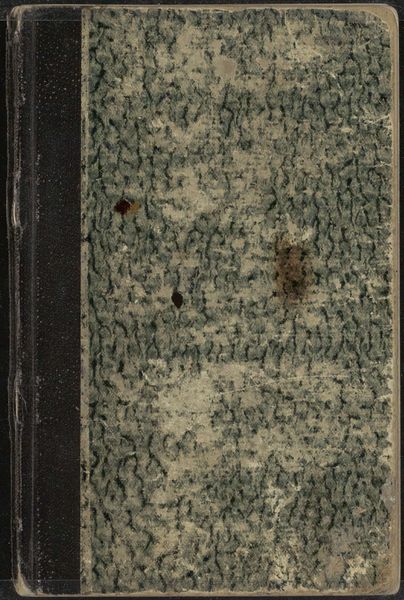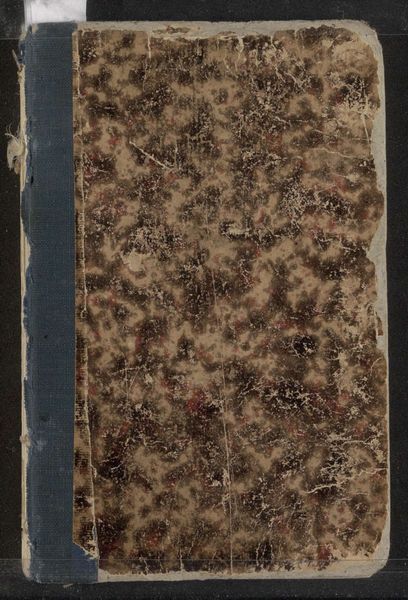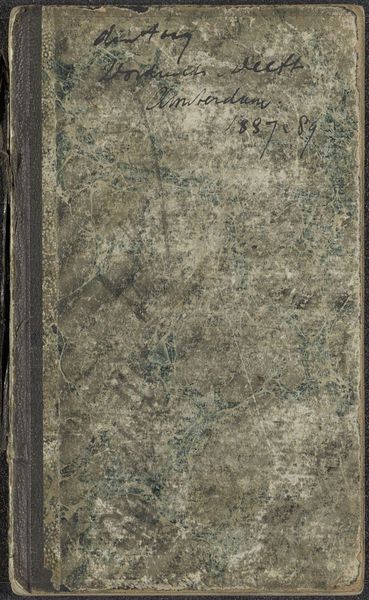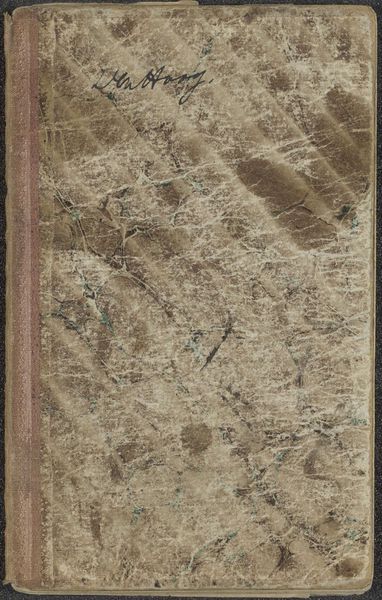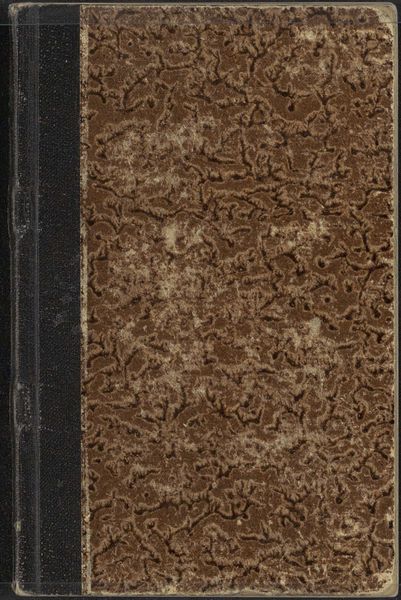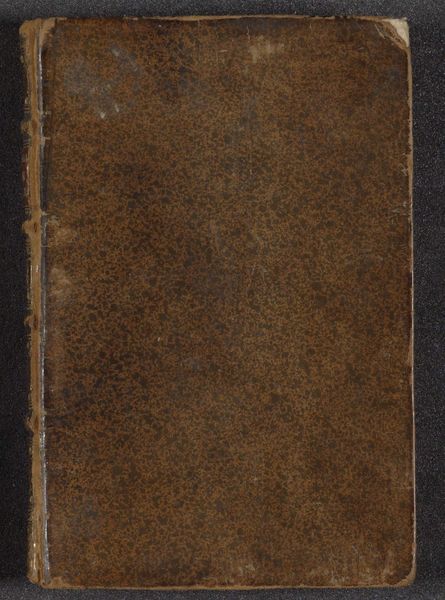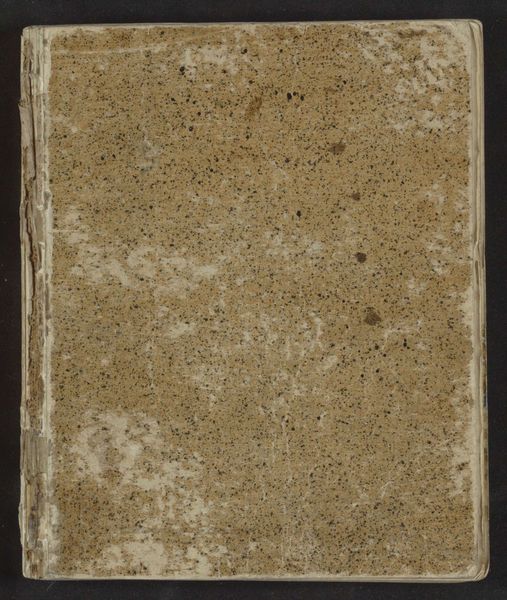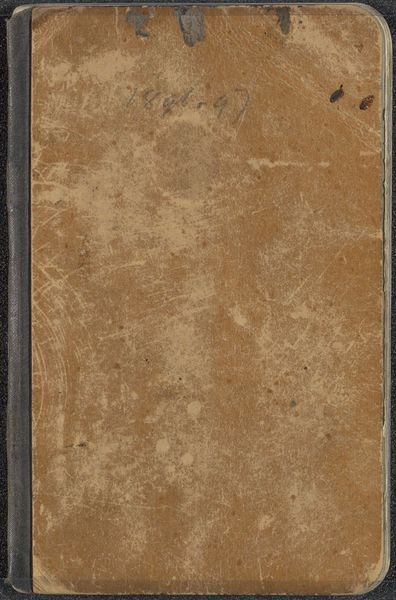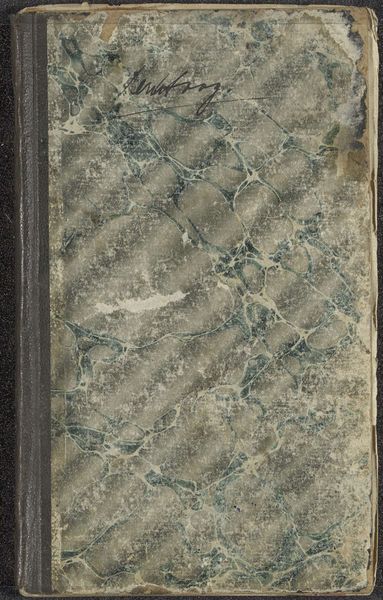
Schetsboek met 46 bladen vervaardigd te Amsterdam en Haarlem c. 1903
0:00
0:00
georgehendrikbreitner
Rijksmuseum
Dimensions: height 159 mm, width 102 mm, thickness 7 mm, width 205 mm
Copyright: Rijks Museum: Open Domain
Curator: This is "Sketchbook with 46 Leaves, Made in Amsterdam and Haarlem," dating back to approximately 1903 by George Hendrik Breitner. The work is comprised of drawings done in Amsterdam and Haarlem, using media such as watercolor and drawing on paper. Editor: The cover reminds me of old book I would find in a library, all filled with stories untold... Or in this case, images yet to unfold... It's like holding a secret, a captured moment, do you think that its outside reflects its inside in some way? Curator: In a way, yes. Breitner was interested in capturing fleeting moments of urban life. The notebook cover hints at layers of experiences and perceptions, mirroring the quick sketches of daily scenes within its pages. It has some symbolism in the apparent roughness or worn details. Editor: Fleeting moments. Right, looking closely, that rough surface even seems like a landscape painting. The way the muted colors blend almost creates a city, its many faces weathered over time. What about you? Does the fact that it is a compilation mean anything to you? Does it show a process perhaps? Curator: Absolutely. Sketchbooks can carry a narrative of a kind of "perpetual journey". It gives us something akin to an open window into the artist's mindset. The urban streets that Breitner depicts carry their own symbolic meaning as settings of progress, industry, or of course daily life. This creates both personal reflection and social commentary, as Breitner himself said "Painting is seeing". Editor: Very well put! "Painting is seeing." I imagine him strolling through Amsterdam, constantly observing and jotting down fragments. The cover seems to represent that active gaze... like his notebook accumulated layers of observation over time. A silent witness in the urban chaos. Curator: Indeed. It also illustrates the evolution of an artist who has their individual views and perceptions molded through culture. Through this physical object we witness their own history. Editor: In short, it isn't merely a receptacle; it carries its unique weight! Well, it’s amazing how one material object can conjure up an idea. The notebook's facade does well, and leaves us to fantasize about the content within, right? Curator: Exactly. It bridges time. Each stroke represents both its era and its timeless narrative on capturing urban life through observation.
Comments
No comments
Be the first to comment and join the conversation on the ultimate creative platform.
